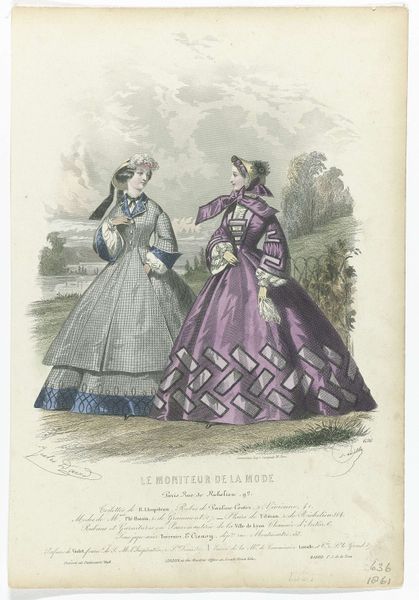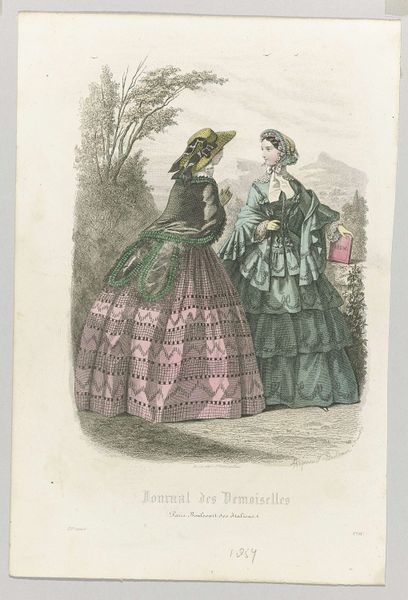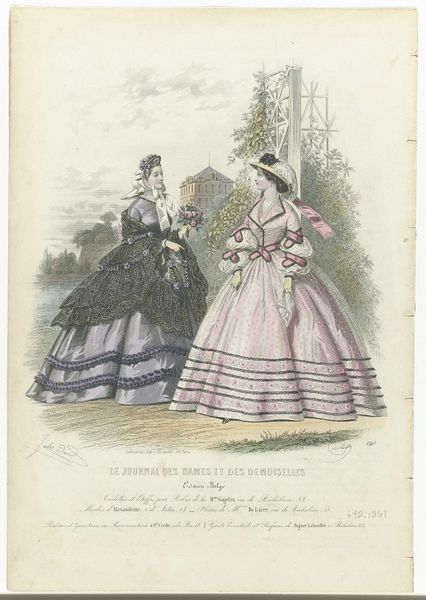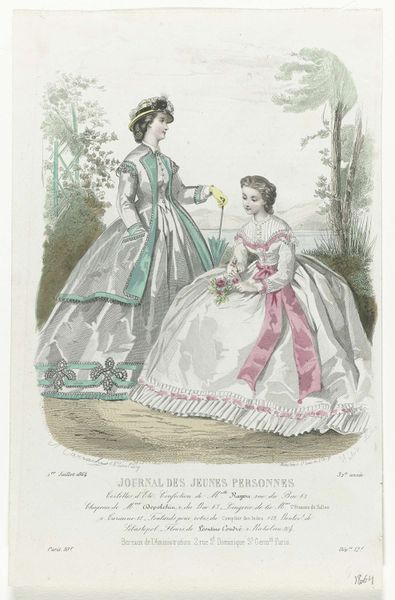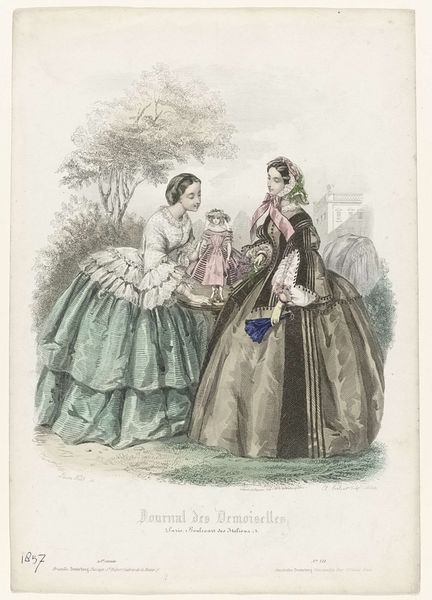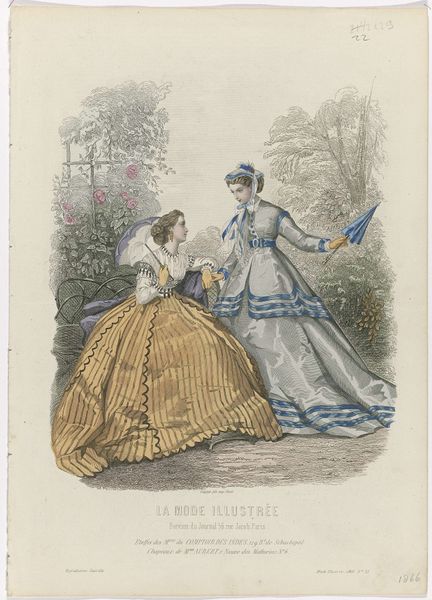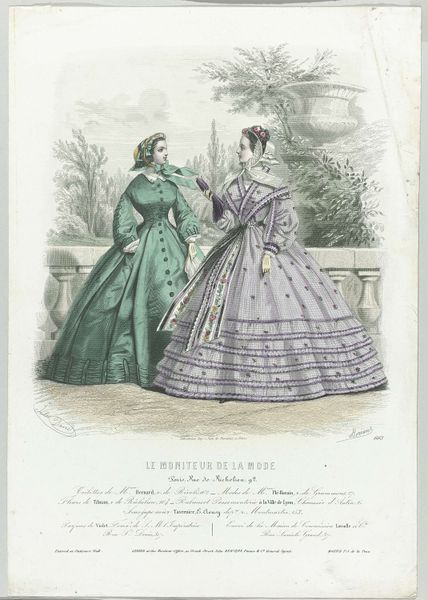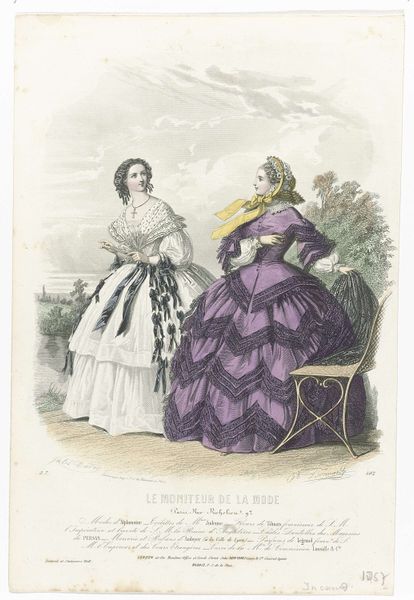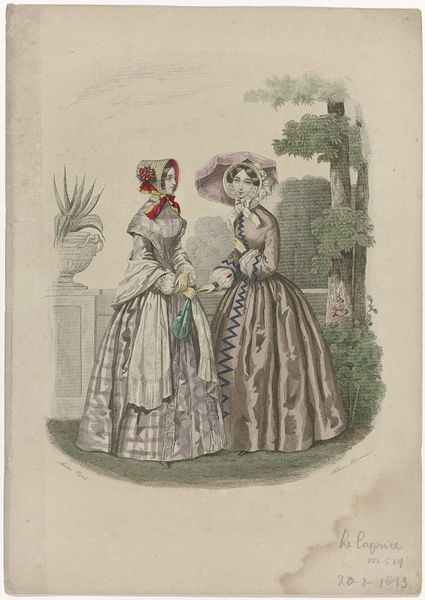
Dimensions: height 250 mm, width 189 mm
Copyright: Rijks Museum: Open Domain
Editor: Here we have J. Bonnard's "An Explosion of Fashion Magazines" from around 1863, a lithograph that strikes me with its soft colours, and somewhat unsettling feeling of being watched by the figures. What do you see in this piece? Curator: I see an intriguing artifact of its time, steeped in the symbolic language of 19th-century fashion. What catches my eye is the careful articulation of social identity through dress. Each gown, each accessory, is laden with cultural meaning, isn’t it? Editor: Definitely! The amount of detail on the dresses must have taken weeks, if not months! Curator: Precisely. The dresses become visual statements, and we can see that there are these romantic, historical revivals going on at this time, where women yearned to recapture their national identity. But what does their body language say? Their stances and gazes? What mood do they evoke for you? Editor: Well, they're facing each other but not quite connecting. They appear to be very wealthy, perhaps aloof from reality? The setting in the countryside and the clothing may show a cultural tension between tradition and emerging modern attitudes towards luxury and consumerism? Curator: Exactly! In their posture and expression, can we sense echoes of broader cultural shifts, anxieties, or aspirations? Are they self-assured or vulnerable? What does that tell us about women's roles? The magazines serve to tell women what they are to wear, so their identity may have come from printed publications. It is fascinating. Editor: This has definitely altered how I perceive fashion prints! There’s so much more going on than just pretty dresses. Curator: Indeed. This artwork reflects social values and expectations and it shows how identities were being both constructed and contested within 19th century European society. Fashion can act as both armor and aspiration.
Comments
rijksmuseum about 2 years ago
⋮
Starting from the 1850s, fashion magazines became more affordable and acquired a wider readership. The invention of the sewing machine around 1850 made it easier for people to make their own clothes. Ready-made garments were now also on offer, with fashion plates providing vendor addresses, such as the Maison Gagelin in Paris.
Join the conversation
Join millions of artists and users on Artera today and experience the ultimate creative platform.
